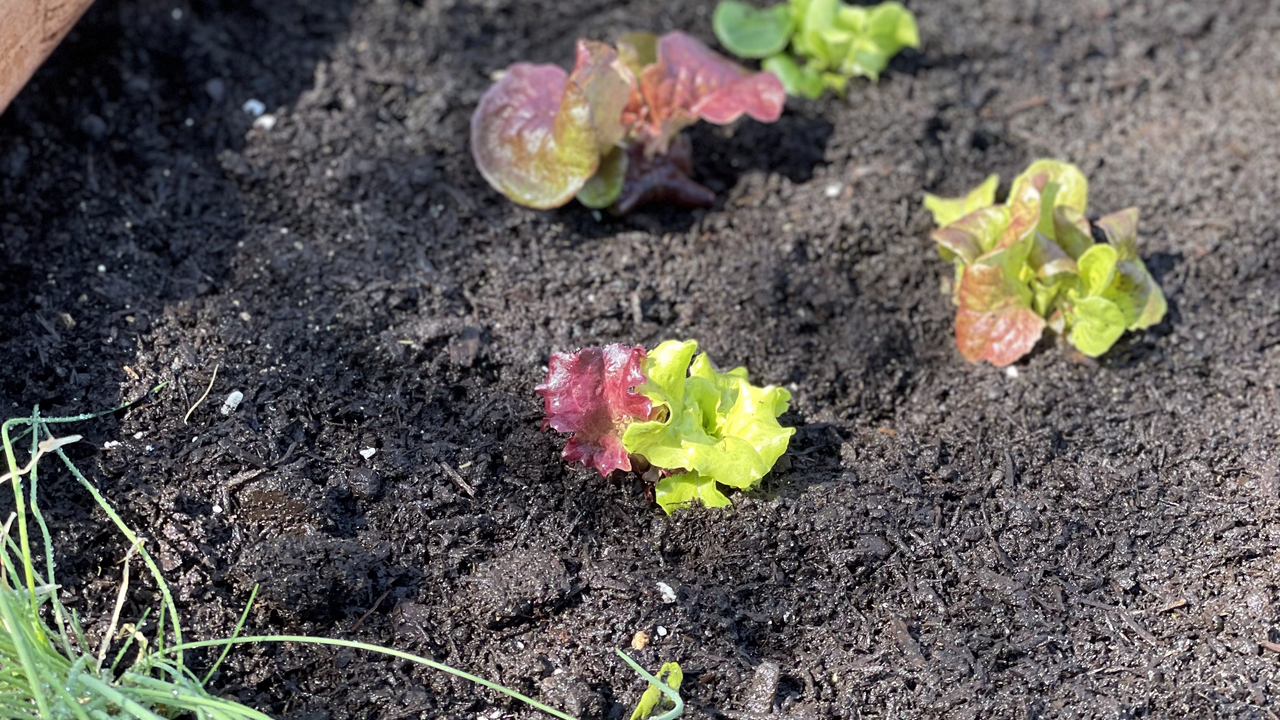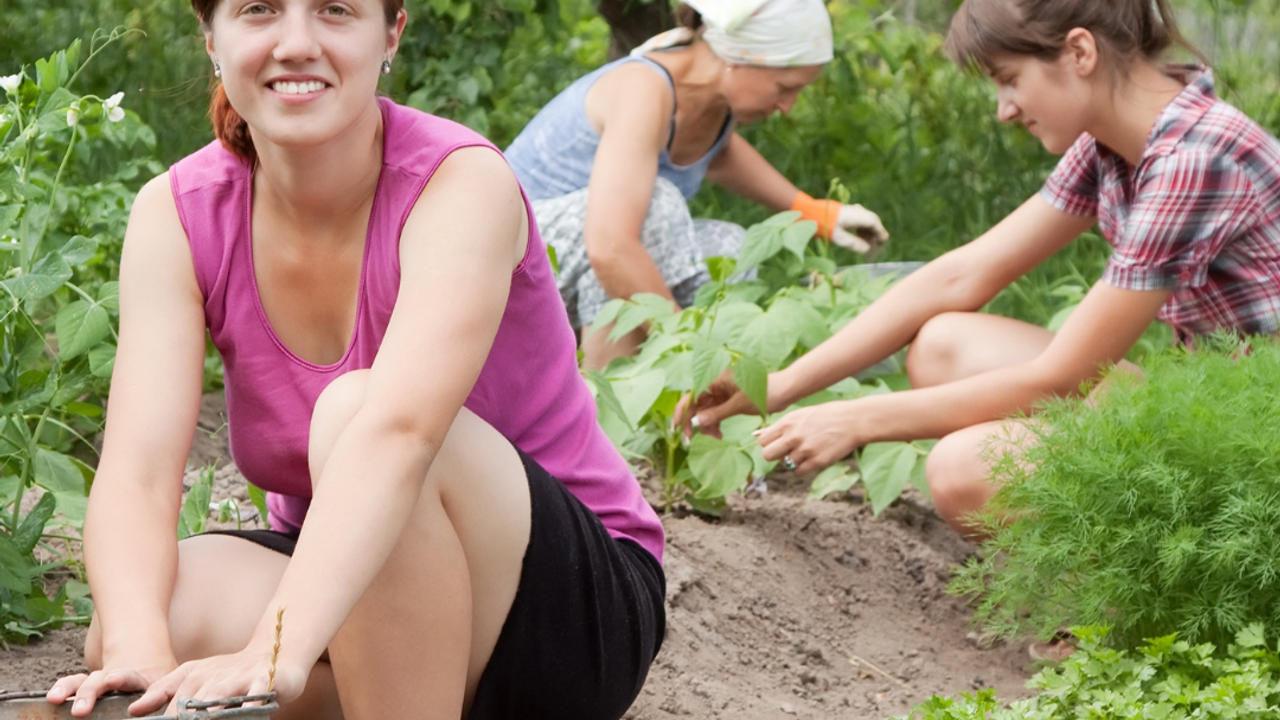How Much Water Do Vegetable Gardens Need?
We are so grateful to have gotten some measurable rainfall in Louisville, KY this week! There truly is no substitute for good old fashion rain in the home garden.
It’s been a HOT summer with temperatures in the 90's and heat indexes in the 100's. Thank goodness for irrigation systems, city water, and of course RAIN water.
Fruits, vegetables, and herbs are heavy drinkers, ha, and need consistent watering. If not, they can develop a myriad of problems.
Inconsistent watering in a food garden can lead to: Blossom End Rot on tomatoes and peppers; plants drying out and burning up entirely; stunted growth and development; and unworkable soil - to name a few.
Here is a good metrics on water requirements for edible plants:
Most food crops need one inch of water per week in 60 degree Fahrenheit weather.
For every 10 degree rise in temperature your plants will need an additional 1/2” of water.
In the 70’s you’ll need 1 1/2” of water.
In the 80’s they need 2” of water.
In the 90’s th...
Community Gardens for Food Security

Planting a Garden: A Step Towards Helping Vulnerable Neighbors, Soup Kitchens, and Food Pantries
Gardening is more than just a hobby; it's a powerful tool for community support and social change. This Edible Gardens Inc. article explores how planting a garden can be transformed into a meaningful endeavor to help vulnerable neighbors, soup kitchens, and food pantries. By harnessing the power of gardening, we can contribute to alleviating food insecurity in our communities.
Starting a Community Garden
A community garden is a fantastic way to begin your journey in helping others through gardening.
- Identify a Suitable Location: Look for unused land in your neighborhood that can be converted into a garden.
- Engage the Community: Involve local residents and groups to foster a sense of community ownership.
- Plan Your Garden: Decide on the types of vegetables and fruits that are most needed in your community.
Partnering with Local Organizations
Building partnerships with local soup k...
Blossom End Rot Prevention

Planting, caring, pruning, and watering, growing your own vegetables takes time and effort but it is so worth it to harvest fresh and local produce. That is unless your beautiful vegetables fall prey to destruction like Blossom End Rot. The rot eats the fruit from the bottom up greatly reducing their quality and their palatability. What may be even more concerning than watching your beautiful tomato or pepper rot is knowing that blossom end rot affects the whole plant. It is not a disease or caused by a pest, Blossom End Rot is caused by a lack of calcium in the soil. If one fruit shows signs it is not uncommon for multiple more fruits on the same plant or in the same bed to also develop rot.
The Cause
Blossom End Rot is found in tomatoes, squash, cucumbers, melons, and peppers and is caused by a calcium deficiency in the soil. Plants need calcium just like people, they need it for cell structure and to fight pathogens with out calcium the cells can break down and rot. There are two ...
Bug Hit list Series: Squash Vine Borers Prevention

Identification:
The easiest to spot in your garden is the adult moth. They are bright red/orange with black stripes and black wings. If you see them then you know to look for eggs. The eggs will usually be found right at the base of your squash vine near the soil in little clusters. To me they look like mustard seeds. If you find eggs and moths start checking all your squash for holes in the base of the stem. If you find holes near the base with "saw dust" (crumbles of your vine from the borrowing) then you have an infected plant. Another way to identify these plant killers is by watching for morning wilt during your scout walks. If any of your vines specifically squash are wilted in the morning start checking for holes at the base of the plant.

Host Plants:
They are found primarily in squash vines but will also attack zucchini, pumpkins, and even melons. There have also been some reported sightings near potato plants though the larvae will not be there just the moth.
The D...
11 Benefits of Raised Bed Gardening

11 Benefits of Raised Beds
1. Complete control over your soil
When you use raised beds, you are starting from a clean slate. There is no need to fight through clay to add amendments or try to add some humus to your sandy soil, instead you get to use the best and richest soil right from the start. You can fill your beds with well balanced, pH neutral, fertilized soil and have the perfect growing conditions day one.
2. Easy access to your plants
If you are like me and your back has given up on you then a raised bed is a life saver. After my first pregnancy I knew I couldn't keep up with the inground gardening anymore I needed to be kinder to my body, so I made some raised beds. The raised beds we make here at Edible Gardens Inc. are unbreakable and have a beautiful top trim that is wide enough for you to rest your hinny on! This is my favorite feature of the raised bed when it comes to maintaining your garden, I go out sit on the trim and tend to my beautiful veggie plants with mini...
What Vegetables to Plant In July

Planting in July and harvesting before fall is not only possible but surprisingly simple. It’s all about knowing your zone and your season. You can use this site to figure out what your zone is https://plantmaps.com. I know for example that Louisville has until late august before the hot season is over and then till late September before the warm season is over and the cool season begins. This means that by late September I will want to have all my hot and warm season crops harvested. Using this knowledge, I know that I can still grow any plant that has a life span of about 70 or less days which means many medium sized plants and any small plants, that can grow in the warm season, are fair game!
Small Plants
Small plants that can grow in the warm and hot season are plants like radishes, beets, arugula, and warm weather adapted lettuces.
Leafy Greens in Summer
If you want to grow lettuce or leafy greens in the summer than make sure you are using varieties that are adapted to be heat...
Tomato Season
If your hands are not coated in green resin, then your hands are not in your tomato plants NEAR enough. Tomatoes are amazing to have in your garden, but they can also be problem children because they are susceptible to a lot of diseases and pests. Get in your garden and get in your tomato plants business that is the secret to a successful tomato season, daily management. I know with summer our lives are getting busier especially mommas out there like me, I've got two beautiful girls 6 and 3 and summer means lots of time with them! I love all the extra time with my girls, but it also means I have to work harder to make time for my garden, one of my solutions is getting them in the garden with me. One thing they help me with is tomato care, tomatoes like kids need attention to grow and produce to their full protentional.
First things first, fertilize.
Tomatoes are takers, they need to draw lots of nutrients from the soil to grow and produce fruit. To help them out you should fertiliz...
5 Ways to Save Your Garden From the Heat

1. Water, Water, Water!
The most important part of garden maintenance in the summer is watering, the right amount and the right timing. When you water make sure you are watering deeply so that you do not under or over water your plants. If you wait till the soil is mostly dry for the first inch or two then water it for long enough that the water reaches deep into the soil, you will increase your plants drought resistance. Plants roots seek out water and nutrients so if the water is found near the surface of the soil, because the gardener isn't watering for long enough, than the roots will stay shallow and close to the surface. If instead there is plenty of water deep in the soil because the gardener routinely waters for a long period of time the roots will grow deep to access the water. As the gardener you can start by watering two times a week in the late spring but as the temperatures rise you may need to increase to four times a week to keep the soil damp. If you continue to water ...
10 Biggest Mistakes People Make When Starting Their Gardens in the Spring

Here are the ten common mistakes we want to help you avoid this spring so that you can start your garden off right this year, and you'll see the benefits all season long!
Number 1: Forgetting to tend to your soil
You must take care of your garden's base before you can even think about growing plants. That's why getting a soil test, making amendments, and adding fertilizer is so important! If the plants don’t have good soil to grow in you’ll be disappointed and can get frustrated by the lack of growth and progress. Before planting we like to add a plant or animal-based fertilizer like Fertrell brand - or anything organic. It’s a great granular fertilizer that allows the plant to take up the nutrients when it needs them! Whatever fertilizer you choose, it is important that it contains nutrients like nitrogen, phosphorus, and potassium. When adding your fertilizer make sure that the soil isn’t too wet. Spring is a rainy time so be patient and wait till your soil has dried out a bit on...
3 Reasons Home Gardens Fail

Beginning gardeners and experienced gardeners alike start off loving the idea of home gardens. They value being engulfed in the sun, soil, seed, and plants. They love bringing the bounty to neighbors and to their own tables. Nurturing abundance in the garden and homegrown nutrition in their bodies.
Soon the weather gets hot, the bugs infest, and garden becomes like a jungle. The gardener becomes avoidant and soon abandons their work, and their desire to grow fresh produce.
The 3 main reasons home gardens fail are these:
1) Overwhelm - when we feel confused we don't do anything. Questions like: When to amend soil, when to plant, when to water, and when to harvest, etc can cause many a mind to shut down. Our lives are full and other obligations take priority over our gardening desire. Having a local gardener to assist you is a rare treasure. Find one here!
2) Unmanageability - once the jungle sets in we are less likely inspired to tend to our gardens. Mowing between the rows, or...

